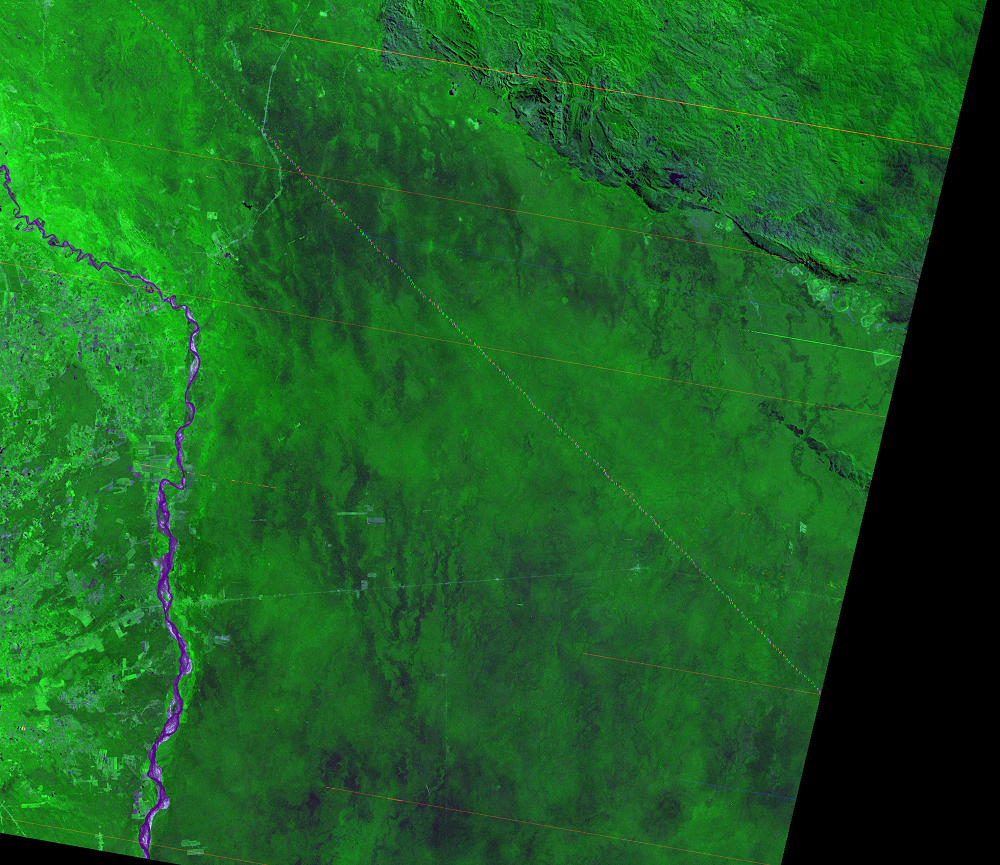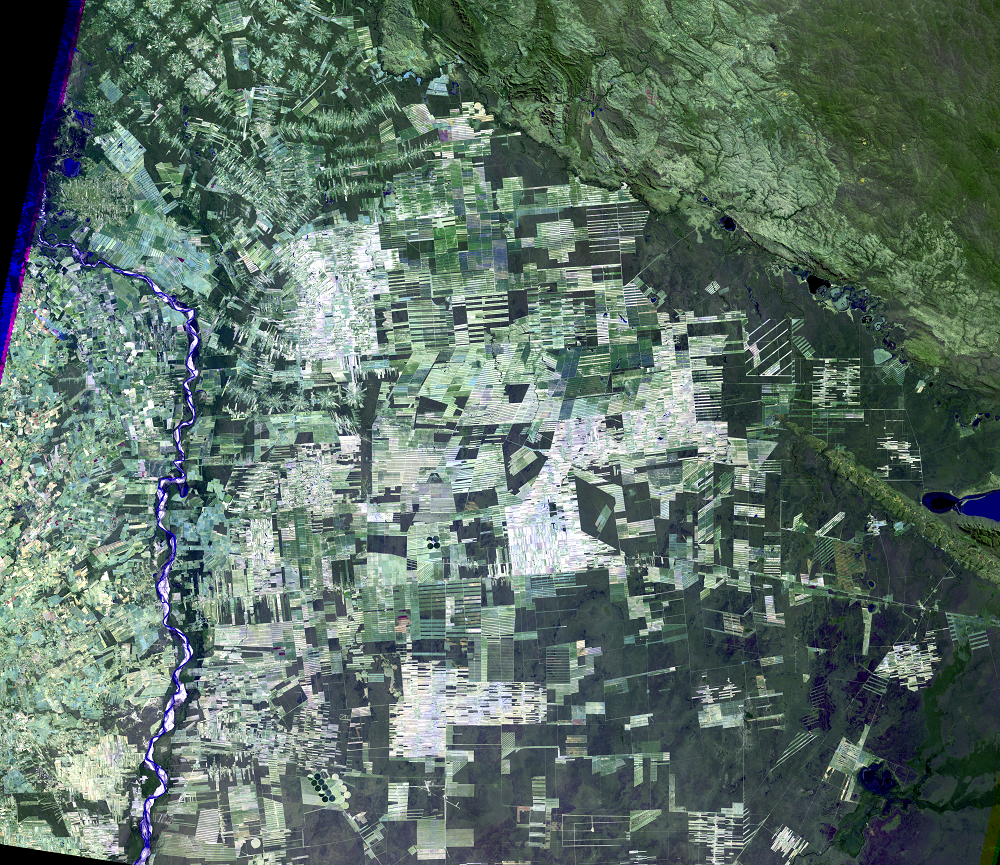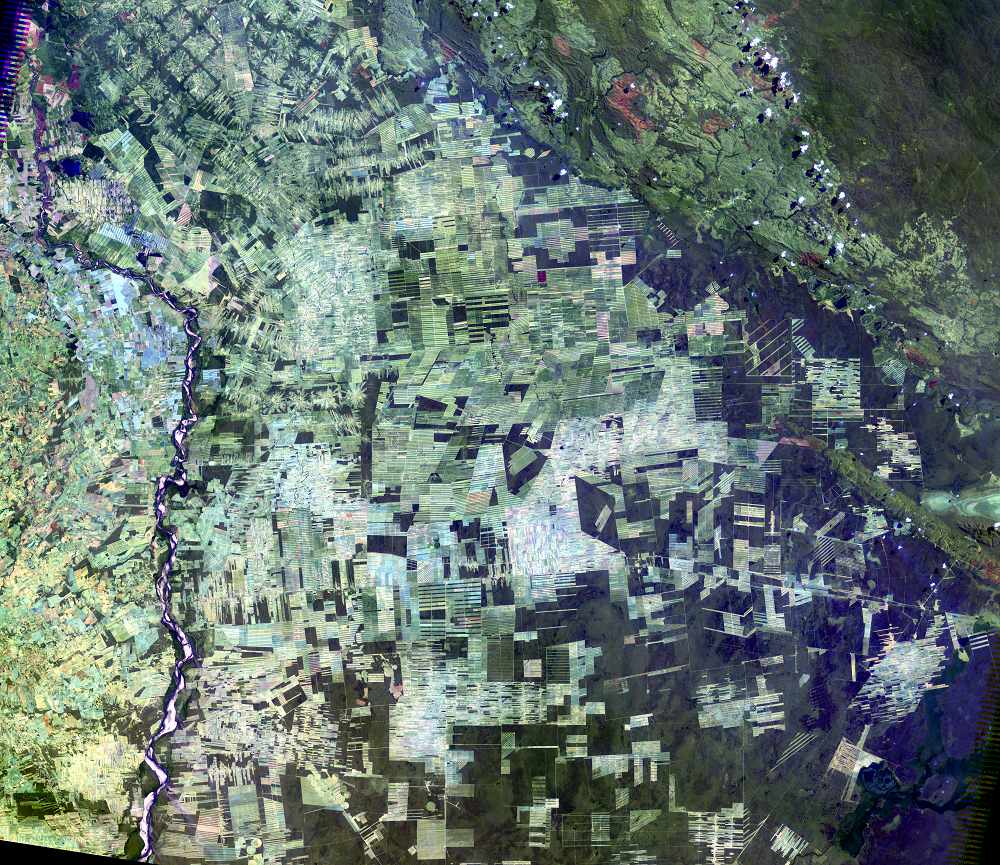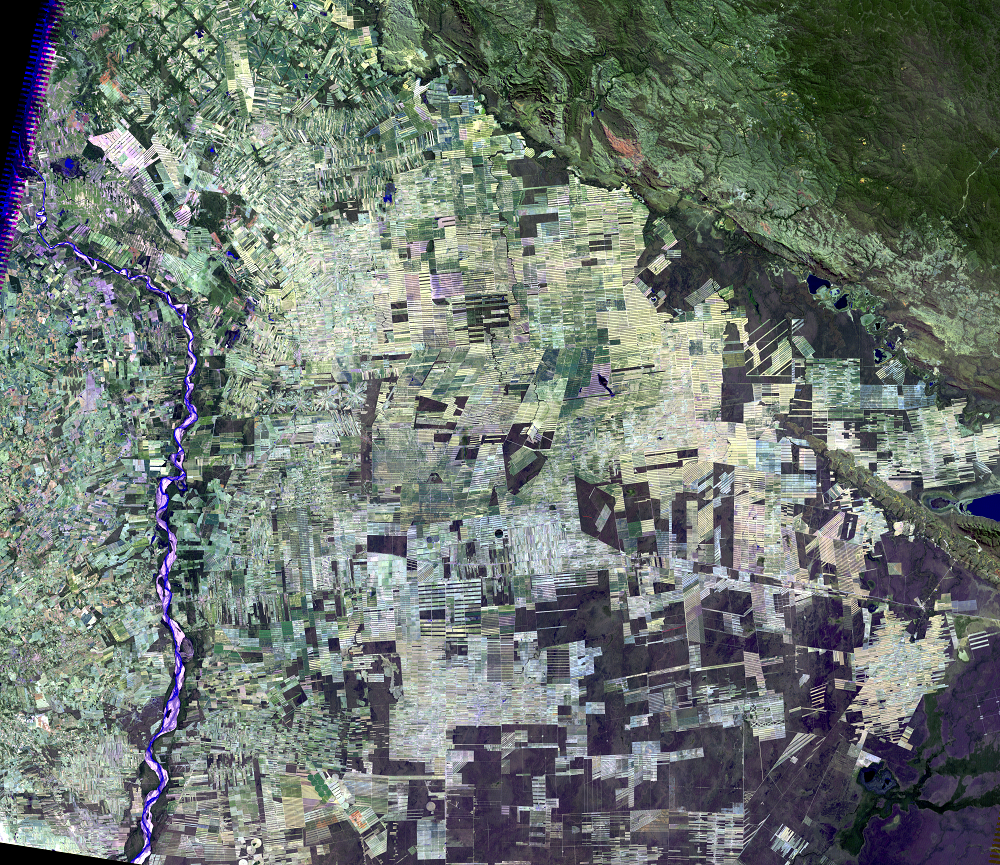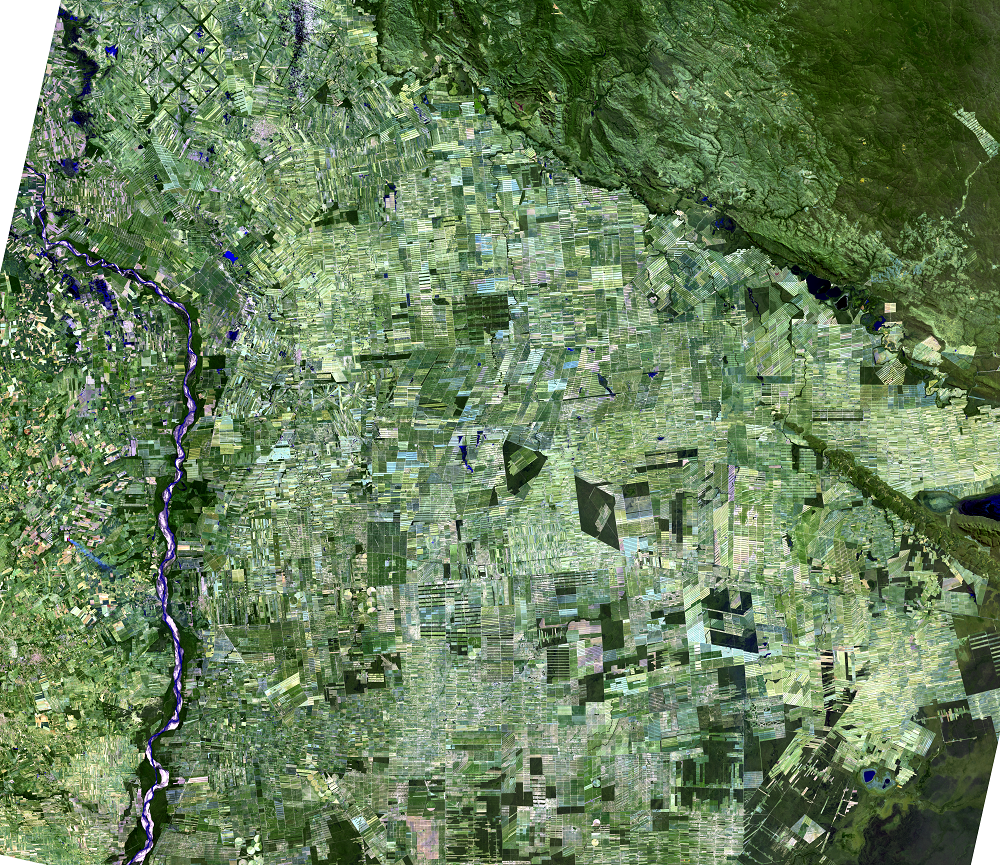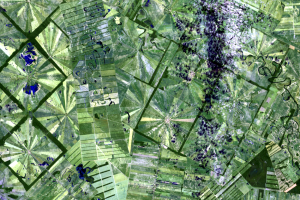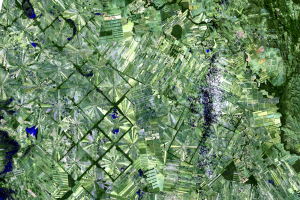
Santa Cruz, Bolivia
Earth Resources Observation and Science (EROS) Center - Earthshots
In the 1960s, San Julian, Bolivia, was nearly inaccessible, located deep in the thick Amazon forest. The few roads that existed were only passable during the dry season. The relatively flat lowlands make the region suited to farming. The land can be easily, and relatively cheaply, cleared with heavy machinery. The area also receives abundant rainfall and can support two growing seasons.
With financial help from international organizations, Bolivia started a program to settle the area, to drive development and improve the economy. This development, however, has resulted in the deforestation of the rain forest. The San Julian settlements are conspicuous in the upper left of these Landsat images as one unique type of deforestation pattern.
Other deforestation patterns emerge in the rest of the time series of images in the Bolivian department called Santa Cruz. The region has transformed from dense forest into a grid-patterned expanse of agricultural lands. Many of the fields are soybeans cultivated for export. Prices have been good for soybeans, and they are relatively easy to grow.
Imagery
Downloads
Forero, J., 2012, Guess who’s chopping down the Amazon now?: All Things Considered, National Public Radio, available online at http://www.npr.org/2012/09/06/160171565/guess-whos-chopping-down-the-amazon-now. (Accessed March 21, 2013.)
Hecht, S.B., 2005, Soybeans, development and conservation on the Amazon frontier: Development and Change, v. 36, no. 2, p. 375–404.
Hess, D.W., 1979, Pioneering in San Julian—A study of adaptive strategy formation by migrant farmers in eastern Bolivia: University of Pittsburgh, Ph.D. dissertation, 328 p.
Killeen, T.J., Guerra, A., Calzada, M., Correa, L., Calderon, V., Soria, L., Quezada, B., and Steininger, M.K., 2008, Total historical land-use change in eastern Bolivia: Who, where, when, and how much?: Ecology and Society, v. 13, no. 1, available online at http://www.ecologyandsociety.org/vol13/iss1/art36/. (Accessed March 21, 2013.)
Mariscal, C.B., Tassi, N., Miranda, A.R., Canedo, L.A., and Cazorla, I., 2011, Rural migration in Bolivia—the impact of climate change, economic crisis and state policy: London, International Institute for Environment and Development, 49 p. (Available online at http://pubs.iied.org/10568IIED.html.)
Müller, R., Müller, D., Schierhorn, F., and Gerold, G., 2011, Spatiotemporal modeling of the expansion of mechanized agriculture in the Bolivian lowland forests: Applied Geography, v. 31, no. 2, p. 631–640.
Müller, R., Müller, D., Schierhorn, F., Gerold, G., and Pacheco, P., 2012, Proximate causes of deforestation in the Bolivian lowlands—an analysis of spatial dynamics: Regional Environmental Change, v. 12, no. 3, p. 445–459.
NASA, 2001, Deforestation in Bolivia: NASA Earth Observatory, available online at http://earthobservatory.nasa.gov/IOTD/view.php?id=1053. (Accessed March 21, 2013.)
Painter, M., and Partridge, W.L., 1989, Lowland settlement in San Julian, Bolivia—Project success and regional underdevelopment, in Schumann, D.A., and Partridge, W.L., eds., The human ecology of tropical land settlement in Latin America: Boulder, CO, Westview Press, p. 340–377.
Redo, D.J., Aide, T.M., and Clark, M.L., 2012, The relative importance of socioeconomic and environmental variables in explaining land change in Bolivia, 2001–2010: Annals of the Association of American Geographers, v. 102, no. 4, p. 778–807.

